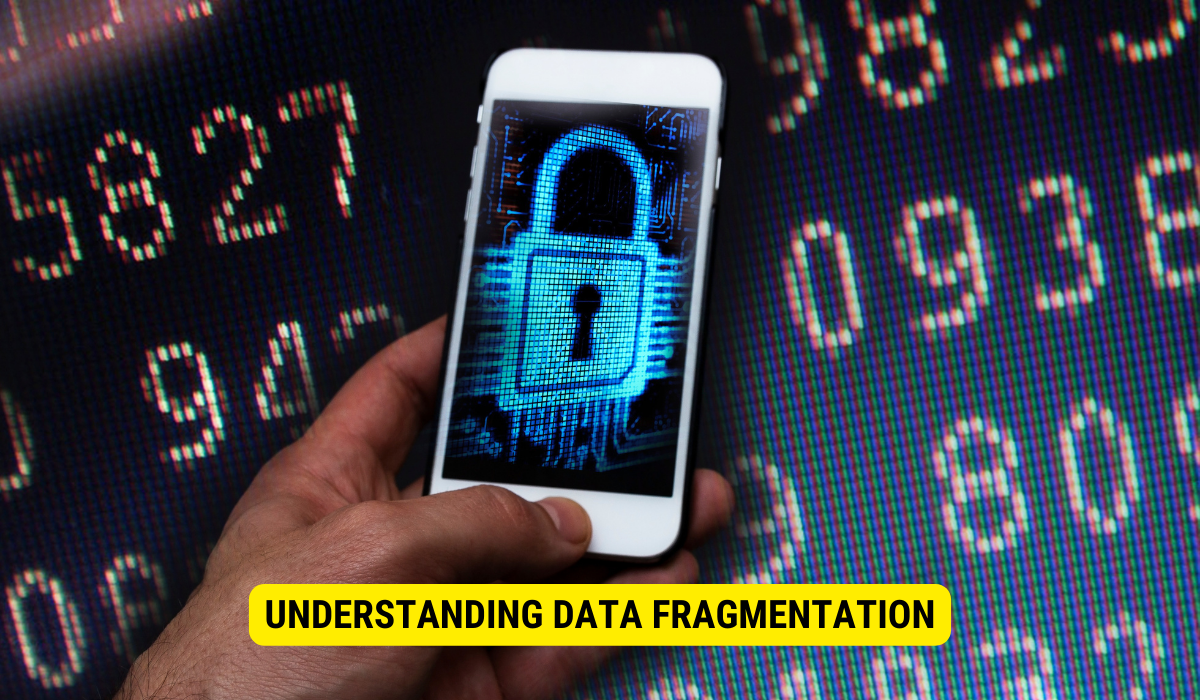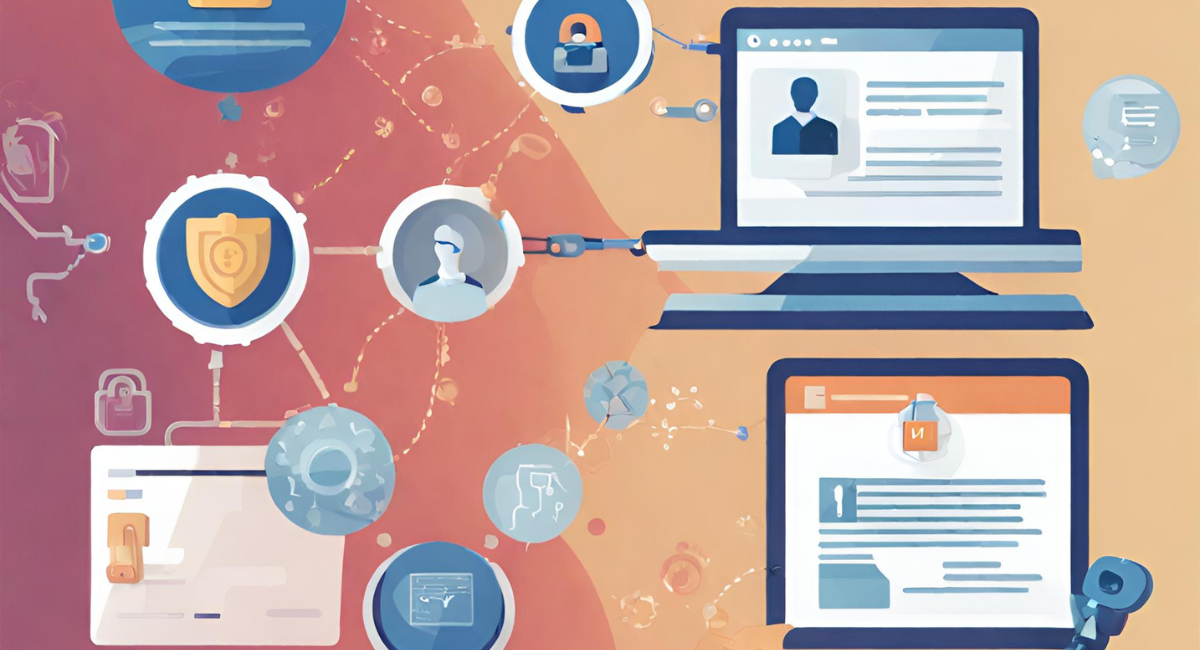Utilizing data fragmentation in tandem with encryption, firewalls, and strong authentication protocols can significantly enhance data security. This combination creates a layered defense that makes unauthorized access or data breaches more challenging and complex.
Data security is a crucial concern in today’s digital age. With the growing amount of sensitive information being stored and transmitted electronically, it is essential to implement robust security measures to protect it from unauthorized access or misuse. One such method that has gained prominence in recent years is data fragmentation. But what exactly is data fragmentation, and how can it be utilized along with other methods to enhance security? Let’s delve into the topic and explore its various aspects.
Understanding Data Fragmentation
Data fragmentation is a technique to split data into smaller fragments or pieces. Each fragment contains only a portion of the complete data. This fragmentation can be done based on factors such as file size, data type, or even specific attributes. By dividing the data into smaller parts, it becomes more challenging for hackers or unauthorized individuals to access or make sense of the complete information.
Furthermore, data fragmentation serves as a deterrent against data breaches. Even if one fragment of the data is compromised, the attacker would only gain access to a fraction of the complete information, thereby reducing the impact and potential damage that can be done.
The Basics of Data Fragmentation
When implementing data fragmentation, it is crucial to consider a few key factors. First and foremost, the fragmentation process should be well-defined and systematic. The data should be divided in a structured manner, ensuring that each fragment contains a coherent and meaningful subset of the original information.
For example, the data can be fragmented in a large customer information database based on geographical regions. Each fragment would then contain the customer data specific to a particular region. This approach helps organize the data and allows for efficient retrieval and processing of information related to a specific region.
Secondly, properly identifying and labeling the fragments is essential to ensure efficient retrieval and reassembly of the data when required. The fragments should be tagged with metadata or unique identifiers that facilitate their organization and reconstruction.
For instance, in a distributed system where data is stored across multiple servers, each fragment can be assigned a unique identifier corresponding to its location. This enables the system to quickly locate and retrieve the required fragments for processing or analysis.
Role of Data Fragmentation in Security
Data fragmentation plays a pivotal role in enhancing the security of sensitive information. The attack surface is significantly reduced by breaking the data into smaller fragments. This makes it more difficult for potential intruders to gather all the pieces and reconstruct the complete data.
Moreover, data fragmentation can be combined with encryption techniques to enhance data security further. Each fragment can be encrypted individually, adding an extra layer of protection to the data. Even if an attacker manages to obtain a fragment, they would still need to decrypt it to access the underlying information, which adds another level of complexity.
In addition to reducing the risk of unlicensed access, data fragmentation enhances data confidentiality. Since each fragment contains only a portion of the information, even if an attacker gains access to one or a few fragments, they cannot comprehend the complete data without the other missing fragments.
For example, in a financial institution where customer data is fragmented, an attacker who gains access to a single fragment containing transaction history would not have access to the customers’ personal details or account balances. This ensures that even if one fragment is compromised, the overall security of the data remains intact.
Data fragmentation is an effective strategy to guard sensitive information from unlicensed access and mitigate the potential impact of data breaches. By dividing data into smaller fragments and implementing proper organization and encryption techniques, organizations can strengthen their data security posture and safeguard their valuable assets.
Exploring Different Methods to Enhance Security
Data fragmentation can be complemented and reinforced by various other security methods. Let’s take a closer look at some of these methods:
Encryption Techniques
Encryption is the process of converting data into a form that is unreadable without a decryption key. By encrypting the data fragments, even if an attacker manages to obtain them, they cannot decipher the information without the corresponding decryption key.
There are numerous encryption algorithms available, ranging from symmetric key encryption to asymmetric key encryption. Implementing robust encryption protocols can further strengthen the security of data fragments and safeguard against unauthorized access.
Use of Firewalls and Antivirus Software
Firewalls and antivirus software are essential tools in any comprehensive security infrastructure. Firewalls act as the first line of defense, monitoring and controlling incoming and outgoing network traffic. They can be arranged to allow or block specific types of traffic, effectively protecting against unauthorized entry or data leakage.
Antivirus software, on the other hand, specializes in detecting and eliminating malicious software or malware. By regularly scanning the system for potential threats, antivirus software prevents unauthorized access to data fragments and detects any attempts to compromise the system’s overall security.
Role of Authentication and Authorization

Authentication and authorization mechanisms ensure that only authorized individuals have access to the data fragments. Authentication verifies the identity of the user or entity attempting to access the data, preventing unauthorized access.
Authorization, conversely, defines the level of access granted to authenticated users. By implementing strong authentication and authorization protocols, organizations can maintain granular control over their data fragments and restrict access to those with legitimate needs.
Integration of Data Fragmentation and Other Methods
While data fragmentation and other security methods are effective on their own, their true potential is unlocked when integrated and combined to create a multi-layered security approach. Let’s explore some possible integrations:
Combining Data Fragmentation and Encryption
When data fragmentation is combined with robust encryption techniques, the security of the data is reinforced significantly. Encryption ensures that the individual fragments are unreadable without the decryption key, while fragmentation reduces the exposure of the complete data by dividing it into smaller, independent parts.
This integration adds an additional layer of complexity for potential attackers, as they would need to acquire all the fragments and possess the decryption key to make sense of the information.
Data Fragmentation and Firewalls
Data fragmentation, when used in conjunction with firewalls, can enhance data security at the network level. Firewalls can be configured to allow or block specific data fragments, preventing unauthorized access or transmission of sensitive information.
Furthermore, firewalls can also work with data fragmentation to control the data flow between different system parts. By enforcing strict rules and policies, firewalls can restrict the communication between fragments, further bolstering the overall security of the data.
The Impact of Authentication on Data Fragmentation
Authentication mechanisms, when integrated with data fragmentation, provide an additional layer of security. Organizations can ensure that only approved users can retrieve and interact with the data by requiring individuals to authenticate themselves before accessing specific fragments.
Moreover, authentication can also be used to track and monitor the activities of authenticated users. This allows organizations to create audit trails for data fragments, enhancing accountability and facilitating forensic investigations in the event of any security incidents.
Evaluating the Effectiveness of Combined Methods
Measuring the effectiveness of the combined approach involves multiple factors. One crucial aspect is the level of security achieved in protecting the data fragments. This can be evaluated by conducting penetration tests and vulnerability duties to identify any weaknesses or loopholes in the security infrastructure.
Additionally, the efficiency and performance of the combined methods should be assessed. It is important to ensure that the chosen solution does not significantly impact system performance or introduce excessive complexity that hinders usability and productivity.
Measuring Security Enhancement
Quantifying the enhancement in security can be challenging, as it largely depends on the specific implementation and the threats the organization faces. However, several key metrics can be considered, such as the reduction in successful data breaches or unauthorized access attempts, the time taken to detect and respond to security incidents, and the overall cost savings achieved by preventing security breaches.
Potential Drawbacks and Limitations
While data fragmentation, in conjunction with other security methods, can significantly enhance data security, it is important to acknowledge potential drawbacks and limitations. One potential limitation is the overhead of managing and maintaining the fragmented data. The increased complexity and organization required to handle the fragments may result in additional operational costs and administrative efforts.
Furthermore, fragmentation alone does not guarantee absolute security. If the fragments are not properly protected or stored, they may still be vulnerable to attacks or compromise. Therefore, it is crucial to implement comprehensive security measures and data fragmentation to minimize such risks.
Future Perspectives on Data Security
Data security is an ever-evolving field, and adapting and embracing emerging trends is essential to stay ahead of potential threats. Let’s explore some future perspectives on data security:
Emerging Trends in Data Security
One emerging trend is using advanced machine learning and artificial intelligence algorithms to detect and prevent security breaches. These technologies can examine vast amounts of data in real time, identifying patterns or anomalies that may indicate potential attacks or vulnerabilities.
Another emerging trend is the widespread adoption of blockchain technology for data security. Blockchain’s decentralized and immutable nature provides a robust framework for securely storing and transmitting data fragments, offering enhanced integrity and transparency.
The Future of Data Fragmentation in Security Enhancement
Data fragmentation is expected to play a vital role in enhancing data security as technology advances. The need for innovative security measures becomes paramount with the increasing amount of sensitive information being generated and transmitted.
In the future, we can anticipate advancements in data fragmentation techniques, ensuring more efficient and streamlined fragmentation processes. Additionally, integration with emerging security technologies, such as quantum encryption or secure multiparty computation, may further enhance the security of data fragments.
Key Takeaways
- Data fragmentation splits sensitive information into smaller pieces, making unauthorized comprehension difficult.
- Pairing encryption with fragmentation adds a layer of security by making each fragment unreadable without a decryption key.
- Implementing firewalls provides an additional defense by regulating which data fragments can be accessed or transmitted.
- Strong authentication and authorization protocols ensure only valid users can access specific data fragments.
- Continuous adaptation and integration with emerging technologies are essential for future-proofing data security.
FAQs
What is data fragmentation in the context of security?
Data fragmentation is a technique wherein data is split into smaller pieces or fragments, making it harder for unauthorized individuals to access or understand the full information.
How can encryption enhance the security of data fragments?
Encryption converts data fragments into an unreadable form that can only be decrypted with a decryption key, adding another layer of protection against unauthorized access.
Why are firewalls important when using data fragmentation?
Firewalls monitor and control data traffic, allowing or blocking specific data fragments, further preventing unauthorized data transmission or access.
How does authentication complement data fragmentation?
Authentication ensures only authorized users can access specific data fragments, adding user-specific security.
Are there any drawbacks to using data fragmentation for security?
While data fragmentation increases security, it can introduce complexities in data management and might have additional operational costs.
Conclusion
In conclusion, using data fragmentation and other methods offers a promising avenue for enhancing data security. By dividing data into smaller, independent fragments and integrating them with encryption, firewalls, authentication, and authorization mechanisms, organizations can create a multi-layered security approach that significantly reduces the risk of unlicensed access or data breaches. As technology evolves, it is vital to stay informed about emerging trends and technologies to enhance data security continuously.
